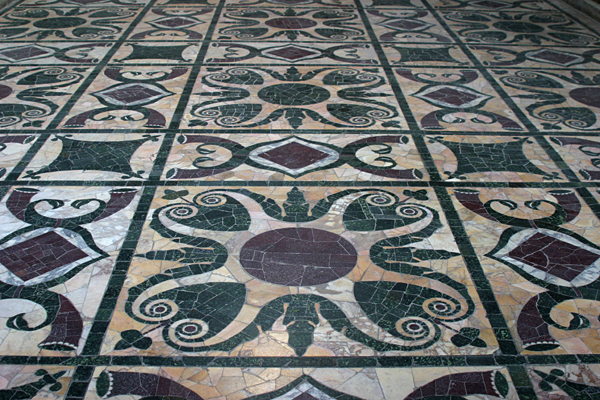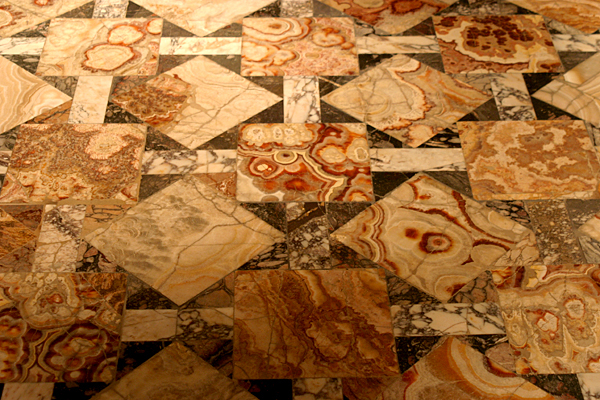
"When laid with their proper inclination, they [pavements] are to be rubbed off, so that, if in slabs, there may be no rising edges of the ovals, triangles, squares, or hexagons, but that the union of the different joints may be perfectly smooth. If the pavement be composed of tesseræ, the edges of them should be completely smoothed off, or the work cannot be said to be well finished."
Vitruvius, De Architectura (VII.1.4)
Instead of using smaller pieces of square stone (tesserae) to create a design, opus sectile is the technique of cutting thin sections of colored stone into figures and geometric shapes to make elaborate inlaid pavements. Rarely used in the Julio-Claudian period, opus sectile work became increasingly popular with Domitian. Here, in the Curia Julia, rosettes of porphyry and serpentine alternate with pairs of cornucopias.

Polychrome stone, such as marble, which itself can be richly patterned, make for an even more extravagant effect, such as this example in the Palazzo dei Conservatori (Rome). Discovered in 1875, the alabaster floor (the so-called di Palombara, from a later villa of the same name) comes from the garden residence on the Esquiline hill of Lucius Aelius Lamia, who was consul in AD 3. The Horti Lamiani may have been bequeathed to Tiberius and become imperial property. Caligula lived here, as related by Philo, who visited the estate in AD 38. "And while he was saying this he entered into the outer buildings, examining the chambers of the men and the chambers of the women, and the rooms on the ground floor, and all the apartments in the upper story, and blaming some points of their preparation as defective, and planning alterations and suggesting designs, and giving orders himself to make them more costly" (Embassy to Gaius, CCCLVIII). Here, too, the emperor was hastily cremated and his ashes deposited before they could be removed to the Mausoleum of Augustus (Suetonius, Caligula, LIX). The bust of Commodus as Hercules and the Esquiline Venus were discovered in the gardens as well..
Reference: The Works of Philo Judaeus, the Contemporary of Josephus (1854) translated by C. D. Yonge.